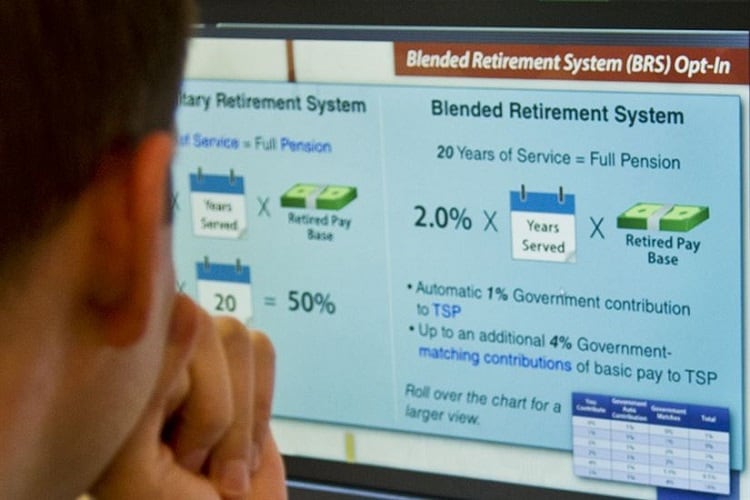All five armed service branches have locked in their mid-career cash-payout plans as part of the military’s new retirement system, and they’ve all done it at the same level ― the lowest allowed by law.
The Air Force announced Monday that it would provide a one-time payout at the 12-year mark of 2.5 times a service member’s monthly basic pay as part of the Blended Retirement System. All troops entering service as of Jan. 1 will fall under the BRS; active-duty members with less than 12 years of service, along with reserve-component members with less than 4,320 retirement points, can opt into the new setup.
The Army, Navy, Marine Corps and Coast Guard previously had set their payouts, known as “continuation pay,” at the minimum level. The pay is in addition to any other service bonuses and incentives, and requires a commitment to serve an additional four years. Guard and Reserve members would receive 0.5 times their monthly basic pay as if on active duty.
More than 1.6 million troops now in service can opt into the BRS or stay with the current system. Only those who opt in will be eligible to receive the continuation pay.
The law establishing the BRS allowed the services discretion over the timing and amount of continuation pay. They could set the figure as high as 13 times a service member’s monthly basic pay (up to six times basic pay for Guard and Reserve), and award it at any point between the member’s eighth and 12th years of service.
RELATED

Keeping troops on the low end of the scale will save the services tens of thousands of dollars per payout; an E-7 would get nearly $43,000 more at the top end of the permitted bonus level than at the bottom.
Services can change bonus amounts to account for manpower needs, but it wasn’t immediately clear how often or when those changes could be made.
Rates for Active Guard Reserve or Full-Time Support members are the same as active-duty rates. Guard and Reserve members get half the monthly base pay they’d receive if on active duty; for example, a Guard or Reserve member at E-7 with more than 12 years of service would get $2,044, half of the $4,088.70 monthly basic pay.
The continuation pay is designed to encourage experienced service members to remain in uniform under a retirement system that cuts their monthly retirement annuity by 20 percent when compared with the current plan.
But unlike the current setup, the BRS allows service members to realize retirement benefits without remaining in uniform for 20 years. The Defense Department will contribute to each service member’s Thrift Savings Plan account, which is similar to a private-sector 401(k) plan; DoD will put in 1 percent of a service member’s basic pay and will contribute up to 5 percent in matching funds based on service member contributions.
Continuation pay can be paid in four equal installments over four years, which could help mitigate the tax consequences of receiving it in one year. It can also be invested in the TSP, although service members must be mindful of the Internal Revenue Service yearly limits on the amount of money that can be put into these retirement plans.
Karen has covered military families, quality of life and consumer issues for Military Times for more than 30 years, and is co-author of a chapter on media coverage of military families in the book "A Battle Plan for Supporting Military Families." She previously worked for newspapers in Guam, Norfolk, Jacksonville, Fla., and Athens, Ga.





